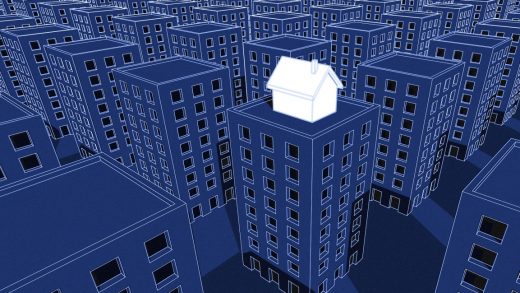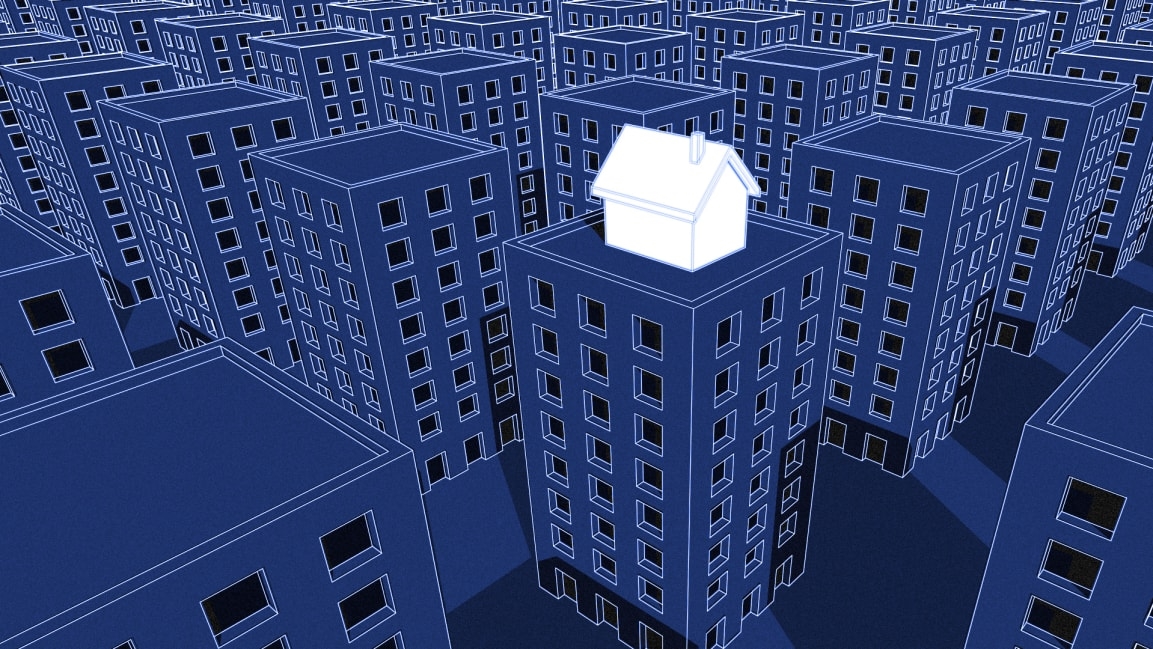Taxing empty apartments could ease the housing crisis
When Vancouver passed a tax on homes that sit empty for more than six months out of the year–apartments that serve as pieds-à-terre or investments for the rich, for example–it made a difference: The city recently reported that the number of empty properties dropped 15% between 2017, when the law took effect, and 2018. More than half of those homes went back on the rental market, presumably to avoid the tax. The city also raised more than $38 million, most of which will go to affordable housing programs.
A new study suggests that something similar could happen in other cities–and that in expensive, dense areas where it’s difficult to build new housing, an empty house tax might be an effective way to make housing more affordable. The research focused on London, where housing has become significantly more expensive in the last couple of decades, and where property has become a popular investment for people who live overseas. In the most expensive neighborhoods, the study found, as many as 30% of the housing can be empty or “low use.”
The researcher, University College London PhD student Jonathan Bourne, started thinking about the issue of unused property after moving back to the U.K. from Norway in 2015. “Empty property and foreign ownership of property was pretty much on everyone’s lips in London,” he says. “And there was a lot of hysteria about it, but there was almost no actual evidence for it.” He kept hearing anecdotes–a friend in the center of the city reported that in his own apartment block, only a third of the homes ever had the lights on. “I thought, I wonder if there’s a way we can actually investigate this.”
It’s difficult to get accurate data about how many homes are actually empty in a given city or neighborhood. Bourne used freedom of information requests to learn how many houses weren’t paying local taxes in each U.K. zip code. In the U.K., people who aren’t full-time residents in a particular district pay a reduced amount for local services, so it was a way to make a tally. (Vancouver made its initial count by looking at which homes weren’t using much electricity.) He compared this to census data. In the most expensive areas, there was a very high rate of empty or low-use homes; this contrasts with some previous research commissioned by the city that had suggested it wasn’t much of a problem.
In the upper-class London neighborhoods of Kensington and Chelsea, the value of those homes was around £21 billion (US$27 billion). With a tax like Vancouver’s, the local government could raise roughly twice as much money as they currently earn from municipal taxes. Those who aren’t full-time residents also can’t vote in local elections, so it’s possible that this type of law could gain support.
Taxes like this are becoming more common around the world: Low-use homes in Melbourne, Australia, are now subject to a tax like Vancouver’s. In Paris, where second homes are common, they’re subject to a tax equal to 60% of the market value of rent. Oakland, California also recently passed a similar policy. Other cities could potentially also benefit from similar laws. In New York City, by one count, there are nearly 75,000 low-use apartments as of 2018 (this number doesn’t include the thousands of others that are vacant because they are being renovated or are in the process of being sold or rented). The organization that calculated this noted that the number is more than enough to house the city’s entire homeless population.
The tax may also make a real difference only in certain cities where the density of low-use houses is high. In Vancouver, despite the success of the tax, it only affected a relatively tiny number of homes–1,085 in 2017. “To the extent that we can improve that a certain number of homes are being held vacant, some sort of tax mechanism to push owners to keep those units rented makes sense…[but] the evidence I’ve seen in most places is that places are not being held vacant at significant rates,” says David Garcia, policy director at the Terner Center for Housing Innovation, an institute at the University of California-Berkeley. “Generally speaking, this deals with a very small segment of the overall housing stock in any given city. Depending on the situation in a particular city, it could be part of a solution–that ultimately should include an emphasis on creating more housing supply overall, for all segments of the population.”
In the most expensive cities, though, there aren’t enough homes for everyone who wants to live there, and cities need to build more. But if that housing is attractive to people who can afford a second home, it doesn’t do much for low-income residents. A tax could potentially be a more useful tool in some cities than new construction (though cities could also just build housing specifically for low-income people). “If you build properties, you’re not actually creating more space for people to live–what you’re doing is creating more opportunities to invest,” says Bourne. “And that is a problem because there is an unlimited amount of desire to have good investments.”
(12)



